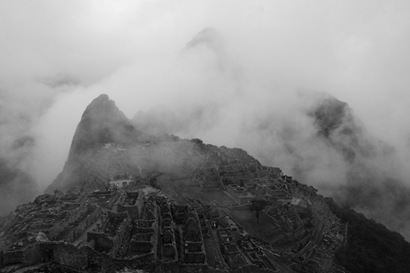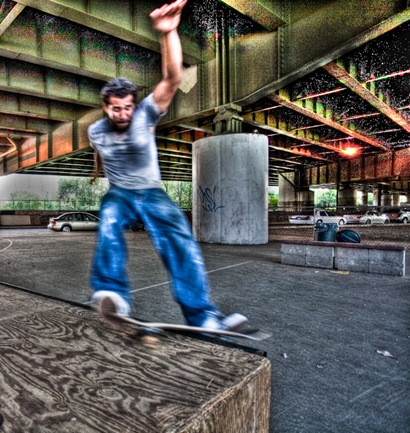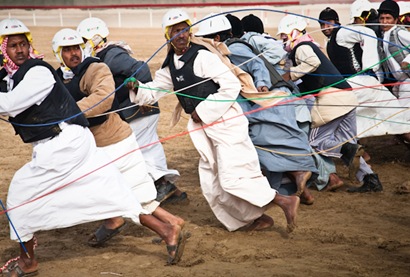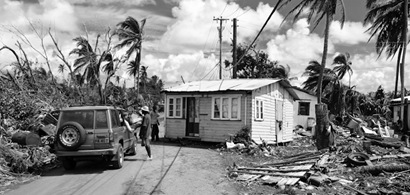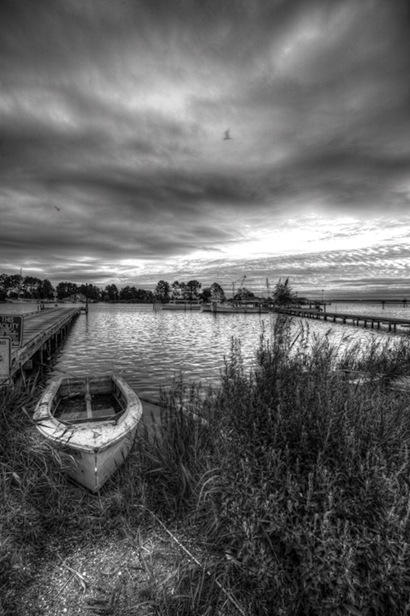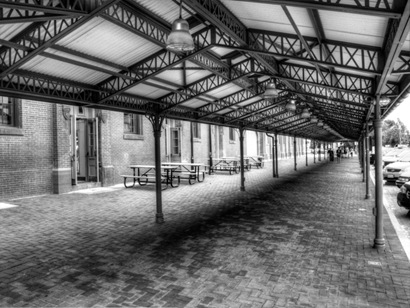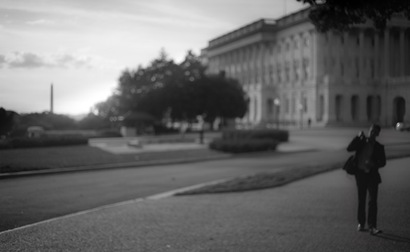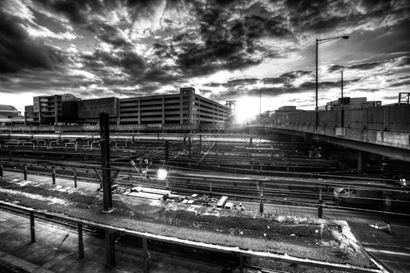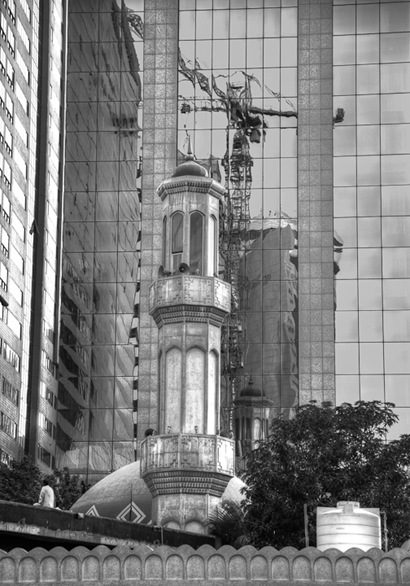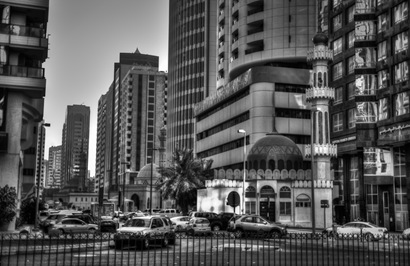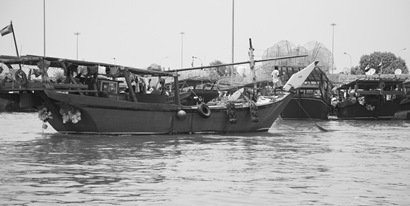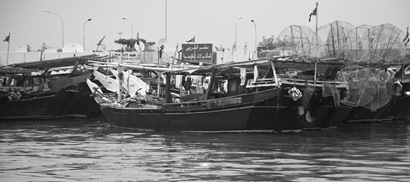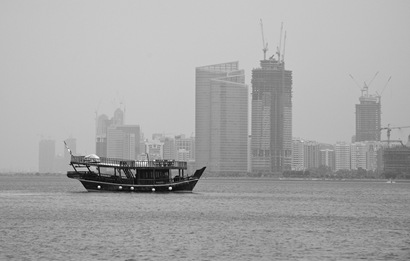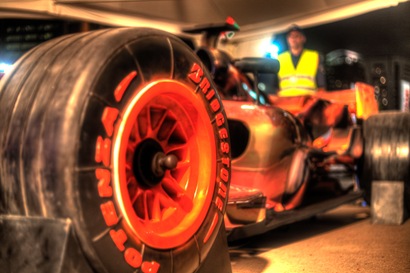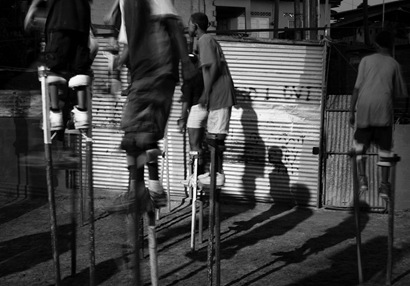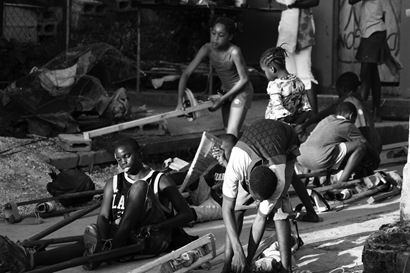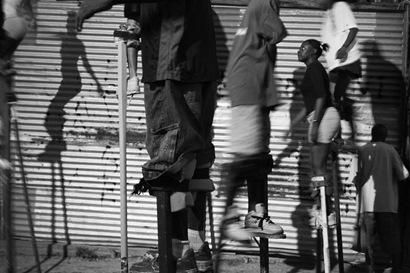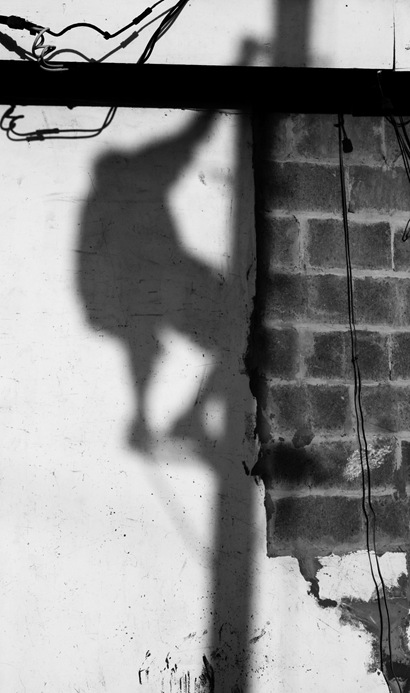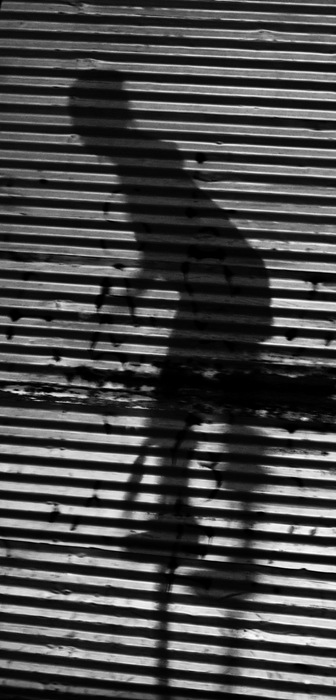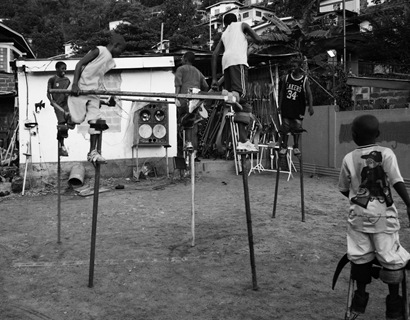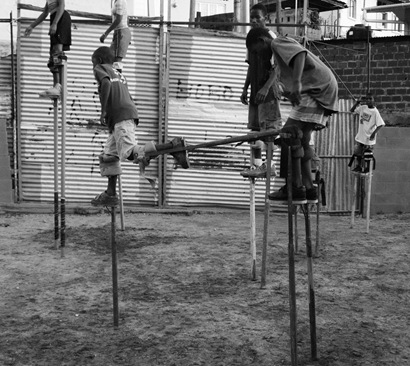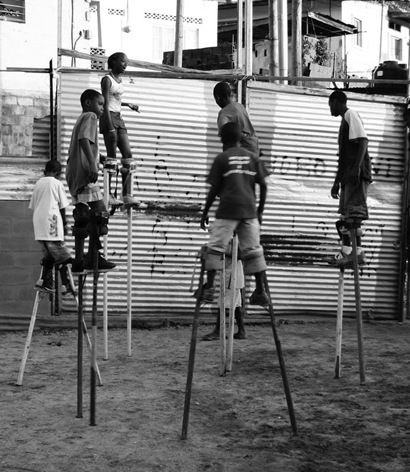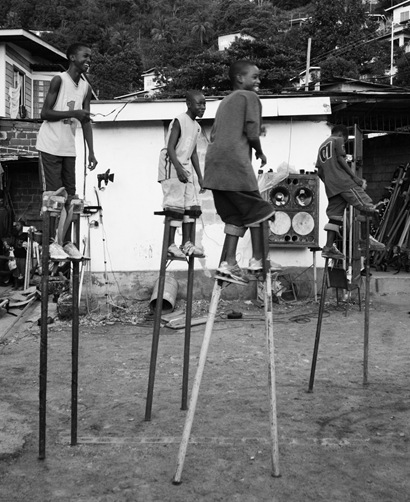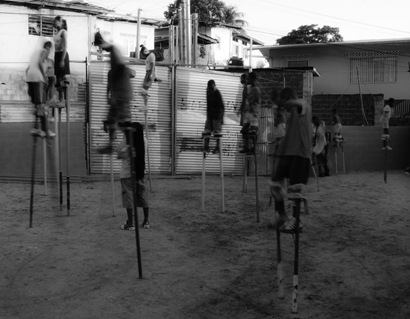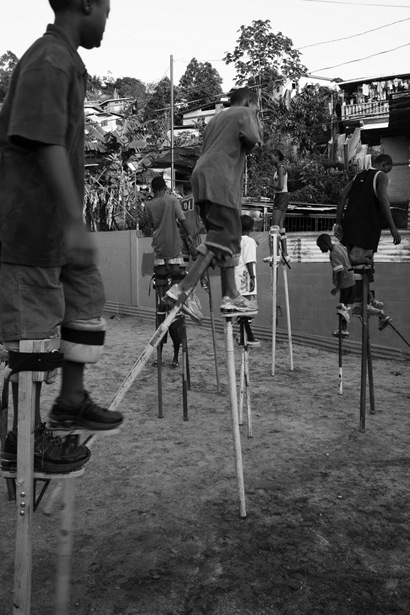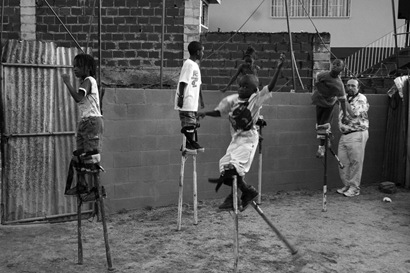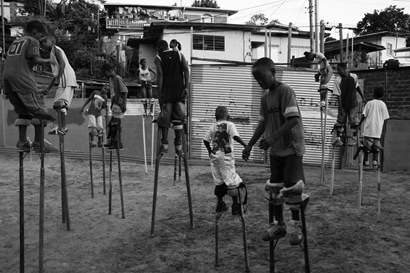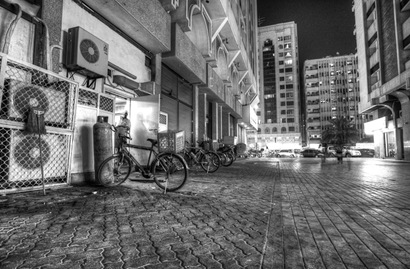
On this visit to Abu Dhabi, I am having a great deal of fun making photography as candidates for my “Unfamiliar Abu Dhabi” project. Just a couple days ago, I went out for an evening walk with the intention of getting some night time street photography, This post features a few photographs from that walk.
The first shot shows a common scene on the side streets of Abu Dhabi – one of the hundreds of small restaurants with a back door open to an alley where delivery bicycles wait for the next order.
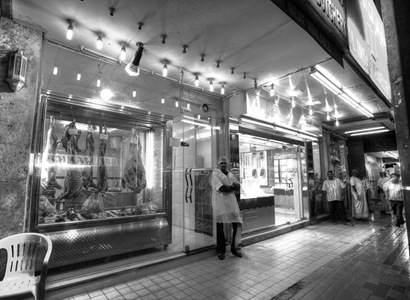
This shot is of a butcher relaxing in front of his store – large animal pieces hanging in the front window. At this size, it may be difficult to tell, but the subject of this photograph is standing in front of just one of many butcher storefronts. This is very common in Abu Dhabi; similar or identical businesses tend to be grouped together. I have not yet determined if this is an organic situation, or there is an unseen planning component that placed the groups of business together intentionally.
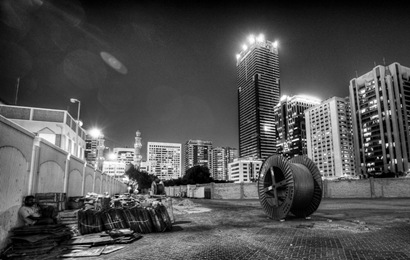
This photograph captures a number of the elements that are iconic representations of Abu Dhabi’s heart. In the background there are number of high rise buildings representing the unmistakable wealth of Abu Dhabi.
Just in front of the buildings in the mid-ground at the left vertical 1/3 point is one of the ubiquitous mosques that are never out of view thanks to the foresight of Sheikh Zayed Bin Sultan Al Nahyan.
Finally in the foreground we have three additional elements that clearly represent the state of Abu Dhabi. To the left we have both refuse, and a man sitting atop a stack of cardboard while talking on the phone. The man is one of the many poor in Abu Dhabi who have come here to seek a better existence than in their home countries of India, Indonesia, Malaysia, Bangladesh, Pakistan or other countries where the opportunities for a laborer to work and earn a living are challenging at best.
The last element is the spool of electrical cable – clearly representing the unrelenting development and construction in Abu Dhabi…the principal source of work for men like the one sitting on the cardboard.
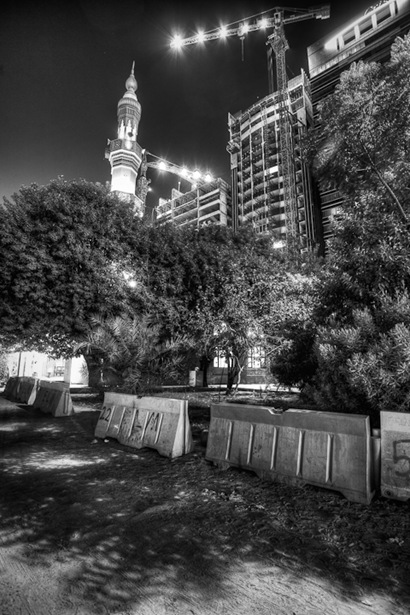
The final shot is similar to others I have made and posted to the blog – the minaret of a mosque set against a background of construction. One an icon to enduring stability and the other representing perpetual change.
All of the photographs featured in this post were three shot HDR taken with a tripod mounted Canon 5D and 17-40 f/4.0L and post processed in Photomatix Pro and Adobe Lightroom.
Go make some great photography!
Craig
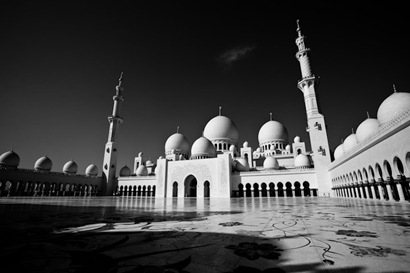
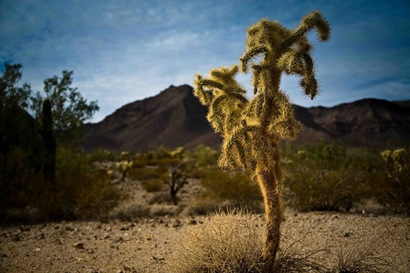
![GeorgetownRunner[1] GeorgetownRunner[1]](http://lh6.ggpht.com/_3ggnNfdZJT0/SuGllemvUiI/AAAAAAAAA-U/3XGwZBDLvDI/GeorgetownRunner%5B1%5D_thumb%5B2%5D.jpg?imgmax=800)
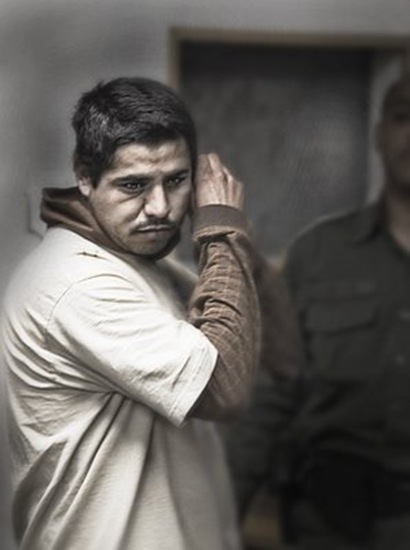
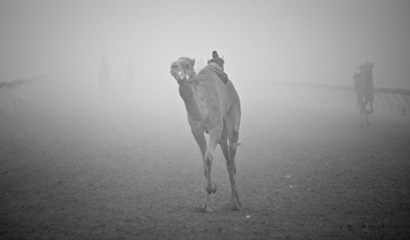
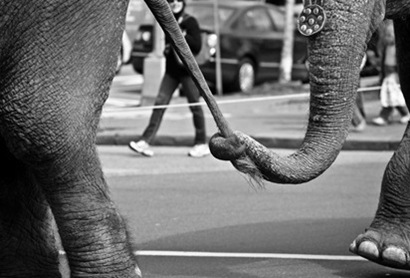

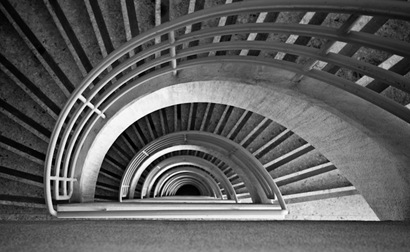
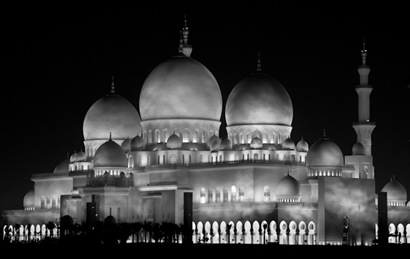
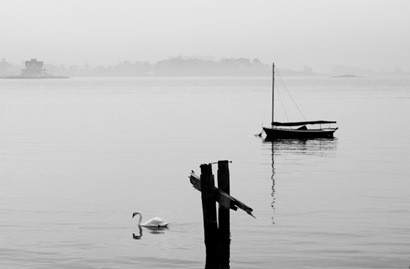
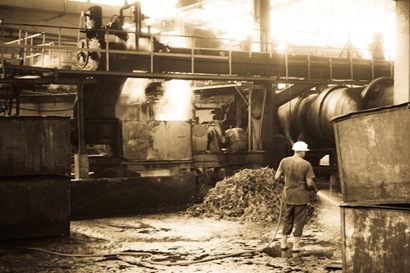
![Weaving Baskets-4_thumb[2] Weaving Baskets-4_thumb[2]](http://lh5.ggpht.com/_3ggnNfdZJT0/SuGl24u4NSI/AAAAAAAAA_c/hxCDw8f0Nvw/Weaving%20Baskets-4_thumb%5B2%5D_thumb%5B2%5D.jpg?imgmax=800)

